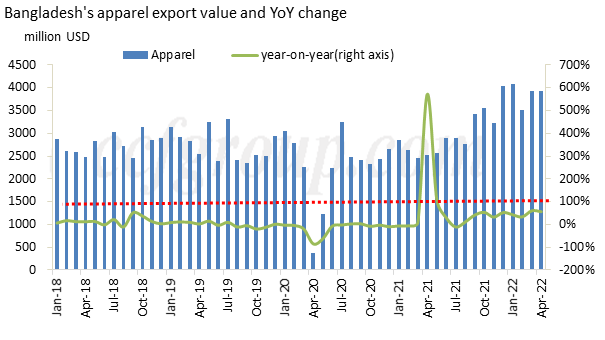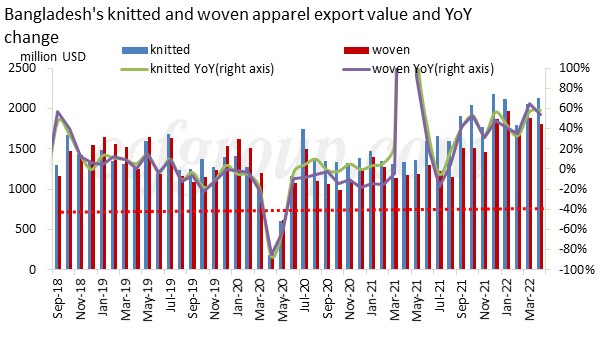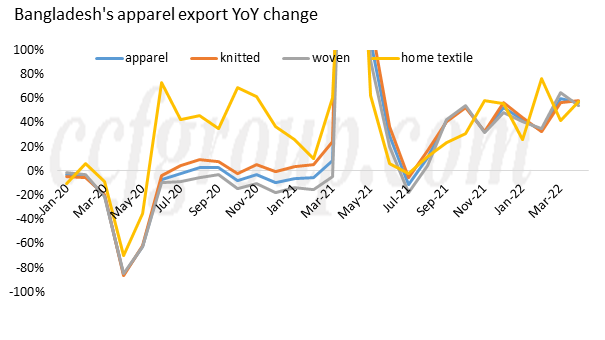Bangladesh's apparel exports rose by over 50% in Apr
The latest data showed that Bangladesh's apparel exports in Apr 2022 were 3.93 billion USD, up 56.3% year-on-year and 0.1% month-on-month, respectively. In Jan-Apr, Bangladesh's apparel exports value in Apr 2022 reached 15. 46billion USD, up 47.8% year-on-year and up 35.6% from the same period in 2019.

Bangladesh's knitted apparel exports in Apr moved up by 58.2% year-on-year and 3.5% month-on-month, while Bangladesh's woven apparel rose by 54.1% year-on-year but down 3.7% month-on-month. The export growth rate of Bangladesh's knitted apparel was faster than that of woven apparel, and the performance was still good. In addition, the export value of Bangladesh's home textile in April was 174million USD, which also showed an increase compared with the same period last year, and the cumulative increase from January to April was 50.3% compared with the same period in 2019, up 95.6% over the same period in 2019. This showed the rapid growth of Bangladesh's home textile.

The growth rate of Bangladesh's apparel and home textile exports has maintained at a high level since August last year and remains the same from January to April this year. The main export markets of Bangladesh's apparel were Europe and the United States, mainly exporting trousers, T-shirts and knitted shirts, which accounted for more than half of the apparel exports, followed by sweaters, tops, and underwear.

In conclusion, Bangladesh's apparel exports still maintained strong growth from January to April. Compared with China, Bangladesh's exports performed better, and the trend of end-users order transfer continued. However, Bangladesh's textile and apparel industry chain was not perfect, in which the domestic supply of cotton, cotton yarn and fabrics was insufficient, and the degree of import dependence was large, so in fact, China can seek varieties to export raw materials in the midstream and upstream of Bangladesh. When the price of cotton in China is lower than that of Indian cotton and US cotton, the export of semi-finished products in the upstream and midstream may become the growth point of some mills.
- Top keywords
- Cotton Price
- Cotton Futures Price
- Cotton Futures
- CZCE
- PTA Futures Price
- Chemical Fiber
- Polyester Prices
- Wool price
- PTA Futures
- Shengze Silk
- China
- Yarn Price
- price
- China Textile City
- Fibre Price
- Benzene Price
- Cotton
- Index
- Cotton Index
- PTA
- fabric price
- NYMEX
- Top 10
- textile industry
- Spot Cotton
- Cotton Yarn
- Polyester Price
- Futures
- PTA Price
- cotton yarn price

